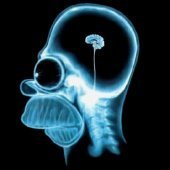Leaderboard
Popular Content
Showing content with the highest reputation on 11/04/21 in all areas
-
Just FYI, the new 5.0.6 update for Satisfactory borks the server, it will not start. Its been reported on their bug tracker already, so avoid restarting your server until they issue a new patch. Satisfactory Q&A (satisfactorygame.com) EDIT: NEVERMIND. ISSUE IS FIXED WITH -multihome=0.0.0.0 in the docker settings under "game parameters". Add this to fix your servers! Issue was caused by CoffeeStain adding IPV6 support4 points
-
Just want you guys to know that we're tracking all of these VM issues and I'm looking into them this week. Thank you for the reports!3 points
-
Short Story: I wish I had discovered Unraid 2 years ago! Long Story: Background: I've had an HP Mediasmart Server EX-485 for many years. Last year I decided that it was time to upgrade. I bought a used HP Gen 7 Microserver and proceeded to build a Windows Home Server 2012 using StableBit DrivePool and StableBit Scanner. I kept using the HP Mediasmart as a backup NAS but it was really time to dump it. 2 weeks ago: I "discovered" Unraid. Downloaded the trial and used the HP Mediasmart as my test bed. I was absolutely amazed at how easy it was to get the server up and running. All I want or need is a NAS box. After 2-3 days of playing around I purchased the Unraid license and started looking for a new server box. 1 week ago: I found a used HP Microserver Gen 8 from a very nice guy in Texas. 2 days ago: I simply moved the USB stick from the Mediasmart to the internal USB port on the Gen 8 and moved the drives from one box to the other. That is all I did. The new server came up immediately - I was pleasantly amazed. Present day: I have tons to learn. I did learn the importance of having a parity drive. And I've just started to look at the software community. My next venture will be to add an SSD cache to the Gen 8 box. I just wanted to share my little story and how pleased I am to find Unraid. I'm 73 years old and only mildly technical - if I can build an Unraid NAS anyone can! Thanks for reading Bill2 points
-
2 points
-
Update Time: I took a chance that the motherboard had a dying capacitor or something causing it to fail due to the extra voltage and I ordered a replacement motherboard from eBay and crossed my fingers that nothing else (including the CPU) was damaged. The new board was an Asus h77. It had 6 sata ports rather than 8 but fortunately I had a second pcie sata controller. Once I confirmed that the new board was working I plugged in my hard drives and my unRAID USB and viola... My server is back up as if nothing happened! Parity check is running now but so far so good. Fingers crossed that this thing will limp along until the chip shortage ends and I build a new gaming rig and donate my old one for building a replacement unRAID server.2 points
-
We've identified a potential cause for the issue and are working on a fix.2 points
-
Would be great to make more use of a cache pool for frequently accessed files that may normally live on the array. Files that are accessed from the array could be copied to cache after the first use, and then handled by the mover process to be flushed from the cache after a period of time with no activity (no need to copy back to the array, as it's already there). User can specify the shares that utilize warm cache by selecting a new option in the share options (Yes, Prefer, Warm, etc.). User should be able to specify file types and sizes that would be in scope for warm caching. Warm cache should be used in conjunction with advanced mover features like those available in the Mover Tuning plugin to allow the user to specify how long files stay in cache after a cache hit. User could specify a dedicated cache for warm caching use only via the share settings (one pool for regular cache, one pool for warm caching). Files that are modified while in the warm cache would be deleted from the array and the updated version copied back to the array via the mover. Files that are unchanged in the warm cache will just be flushed by the mover.1 point
-
6.10.0 Summary of Changes and New Features As always, prior to updating, create a backup of your USB flash device: "Main/Flash/Flash Device Settings" - click "Flash Backup". Note: In order to permit ongoing development, some changes/features are marked experimental. This means underlying support is included in the release, but high level functionality or UI has not been included yet. UPC and My Servers Plugin - [rc2] reworded The most visible new feature is located in the upper right of the webGUI header. We call this the User Profile Component, or UPC. The UPC allows a user to associate their server(s) and license key(s) with their Unraid Community forum account, also known as an Unraid.net account. Starting with this release, it will be necessary for a new user to either sign-in with existing forum credentials or sign-up, creating a new account via the UPC in order to download a Trial key. All key purchases and upgrades are also handled exclusively via the UPC. Signing-in provides these benefits: My Servers Dashboard - when logged into the forum a new My Servers menu item appears. Clicking this brings up a Dashboard which displays a set of tiles representing servers associated with this account. Each tile includes a link to bring up the servers webGUI on your LAN. Install the My Servers plugin to provide real-time status and other advanced features (see below). Notification of critical security-related updates. In the event a serious security vulnerability has been discovered and patched, we will send out a notification to all email addresses associated with registered servers. Posting privilege in a new set of My Servers forum boards. No more reliance on email and having to copy/paste key file URLs in order to install a license key - keys are delivered and installed automatically to your server. Once a license key has been provisioned, it is not necessary to remain signed-in, though there is no particular reason to sign-out. [rc2] Exception: A server must be signed-in to Provision and Renew a Let's Encrypt SSL certificate. My Servers Plugin My Servers is what we call our set of cloud-based or cloud-enabled services and features that integrate with your Unraid server(s). Once installed here are some of the features of My Servers: Real-time Status - with the plugin installed each server tile on the My Servers Dashboard will display real-time status such as whether the server is online or offline, storage utilization and other information. Remote Access link - if enabled, a link is displayed on the My Servers Dashboard to bring up a server webGUI remotely over the Internet. Automatic Flash Backup - every registered server is provided with a private git repo initially populated with the contents of your USB flash boot device (except for certain files which contain private information such as passwords). Thereafter, configuration changes are automatically committed. A link is provided to download a custom zip file that can be fed as input to the USB Flash Creator tool to move your configuration to a new USB flash device. My Servers is an optional add-on, installed through Community Apps or via direct plugin URL. Detailed instructions can be found here. If you have installed the My Servers plugin, signed-in servers will maintain a websocket connection to a cloud-based Lime Technology proxy server for the purpose of relaying real-time status. Security Changes It is now mandatory to define a root password. We also created a division in the Users page to distinguish root from other user names. The root UserEdit page includes a text box for pasting SSH authorized keys. For new configurations, the flash share default export setting is No. For all new user shares, the default export setting is No. For new configurations, SMBv1 is disabled by default. For new configurations, telnet, ssh, and ftp are disabled by default. We removed certain strings from Diagnostics such as passwords found in the 'go' file. Virtualization Both libvirt and qemu have been updated. In addition qemu has been compiled with OpenGL support, and [rc2] ARM emulation (experimental). [rc2] To support Windows 11 which requires TPM and Secure boot, we have added TPM emulation; and, added a "Windows 11" VM template which automatically selects TPM-aware OVMF bios. Also, here are instructions for upgrading a Windows 10 VM to Windows 11. Special thanks to @ich777 who researched and determined what changes and components were necessary to provide this functionality. The built-in FireFox browser available in GUI-mode boot is built as an AppImage and located in the bzfirmware compressed file system image. This saves approximately 60MB of RAM. The Wireguard plugin has been integrated into webGUI, that is, no need for the plugin. If you had the plugin installed previously, it will be uninstalled and moved to the "Plugins/Plugin File Install Errors" page. No action is needed unless you want to press the Delete button to remove it from that page. Your WireGuard tunnels and settings will be preserved. Simplified installation of the Community Apps plugin. The webGUI automatically includes the Apps menu item, and if CA is not already installed, the page offers an Install button. No need to hunt for the plugin link. Let's Encrypt SSL provisioning change. In previous releases code that provisions (allocates and downloads) a LE SSL certificate would first test if DNS Rebinding Protection was enforced on the user's LAN; and, if so, would not provision the certificate. Since there are other uses for a LE certificate we changed the code so that provision would always proceed. Next, we changed the logic behind the Auto selection of "Use SSL/TLS" setting on the Management Access page. Now it is only possible to select Auto if both a LE certificate has been provisioned and DNS Rebinding Protection is not enforced. This is a subtle change but permits certain My Servers features such as Remote Access. Linux Kernel Upgrade to [rc2] Linux 5.14.15 kernel which includes so-called Sequoia vulnerability mitigation. In-tree GPU drivers are now loaded by default if corresponding hardware is detected: amdgpu ast i915 radeon These drivers are required mostly for motherboard on-board graphics used in GUI boot mode. Loading of a driver can be prohibited by creating the appropriate file named after the driver: echo "blacklist i915" > /boot/config/modprobe.d/i915.conf Alternately, the device can be isolated from Linux entirely via the System Devices page. Note that in Unraid OS 6.9 releases the in-tree GPU drivers are blacklisted by default and to enabling loading a driver you need to create an empty "conf" file. After upgrading to Unraid OS 6.10 you may delete those files, or leave them as-is. This change was made to greatly improve the Desktop GUI experience for new users. Added support for Intel GVT-g, which lets you split your Intel i915 iGPU into multiple virtual GPUs and pass them through to multiple VMs, using @ich777's Intel-GVT-g plugin. Added support for gnif/vendor-reset. This simplifies @ich777's AMD Vendor Reset plugin which permits users to get their AMD video cards to reset properly. [rc2] Added so-called "add-relaxable-rmrr-5_8_and_up.patch" modified for our kernel https://github.com/kiler129/relax-intel-rmrr/blob/master/patches/add-relaxable-rmrr-5_8_and_up.patch Thanks to @ich777 for pointing this out, [rc2] Enabled additional ACPI kernel options [rc2] Updated out-of-tree drivers [rc2] Enabled TPM kernel modules (not utilized yet) - note this is for Unraid host utilizing physical TPM, not emulated TPM support for virtual machnes. Base Packages Virtually the entire base package set has been updated. [rc2] For SMB: Samba version 4.15 SMB3 multi-channel is no longer marked "experimental" and is enabled by default. [rc2] Per request we added the mcelog package. With inclusion of this package, if you have an AMD processor you may see this error message in the system log: mcelog: ERROR: AMD Processor family 23: mcelog does not support this processor. Please use the edac_mce_amd module instead. We're not sure what to make of this. It appears mcelog is begin deprecated in favor of rasdaemon. This is something we need to research further. Other improvements available in 6.10, which are maybe not so obvious to spot from the release notes and some of these improvements are internal and not really visible: Event driven model to obtain server information and update the webGUI in real-time The advantage of this model is its scalability. Multiple browsers can be opened simultaneously to the webGUI without much impact In addition stale browser sessions won't create any CSRF errors anymore People who keep their browser open 24/7 will find the webGUI stays responsive at all times Docker labels Docker labels are added to allow people using Docker compose to make use of icons and GUI access Look at a Docker 'run' command output to see exactly what labels are used Docker custom networks A new setting for custom networks is available. Originally custom networks are created using the macvlan mode, and this mode is kept when upgrading to version 6.10 The new ipvlan mode is introduced to battle the crashes some people experience when using macvlan mode. If that is your case, change to ipvlan mode and test. Changing of mode does not require to reconfigure anything on Docker level, internally everything is being taken care off. Docker bridge network (docker0) docker0 now supports IPv6. This is implemented by assigning docker0 a private IPv6 subnet (fd17::/64), similar to what is done for IPv4 and use network translation to communicate with the outside world Containers connected to the bridge network now have both IPv4 and IPv6 connectivity (of course the system must have IPv6 configured in the network configuration) In addition several enhancements are made in the IPv6 implementation to better deal with the use (or no-use) of IPv6 Plugins page The plugins page now loads information in two steps. First the list of plugins is created and next the more time consuming plugin status field is retrieved in the background. The result is a faster loading plugins page, especially when you have a lot of plugins installed Dashboard graphs The dashboard has now two graphs available. The CPU graph is displayed by default, while the NETWORK graph is a new option under Interface (see the 'General Info' selection) The CPU graph may be hidden as well in case it is not desired Both graphs have a configurable time-line, which is by default 30 seconds and can be changed independently for each graph to see a longer or shorter history. Graphs are updated in real-time and are useful to observe the behavior of the server under different circumstances Other Changes We switched to a better-maintained version of the WSD server component called wsdd2 in an effort to eliminate instances where the wsd daemon would start consuming 100% of a CPU core. [rc2] Automatically restrict wsdd to listen only at the primary network interface (br0, bond0, or eth0, depending on config). Fixed issue where you couldn't create a docker image on a share name that contains a space. Fixed issue where 'mover' would not move to a pool name that contains a space. Fixed issue in User Share file system where permissions were not being honored. We increased the font size in Terminal and [rc2] fixed issue with macOS Monterey. [rc2] Fixed jumbo frames not working. [rc2] sysctl: handle net.netfilter.nf_conntrack_count max exceeded (increase setting to 131072) - hattip to Community Member @DieFalse [rc2] Mover will create '.partial' file and then rename upon completion. [rc2] Check bz file sha256sums at boot time. Credits Special thanks to all our beta testers and especially: @bonienl for his continued refinement and updating of the Dynamix webGUI. @Squid for continued refinement of Community Apps and associated feed. @dlandon for continued refinement of Unassigned Devices plugin and patience as we change things under the hood. @ich777 for assistance and passing on knowledge of Linux kernel config changes to support third party drivers and other kernel-related functionality via plugins. @SimonF for refinements to System Devices page and other webGUI improvements. We intend to merge your mover progress changes during this RC series. Version 6.10.0-rc2 2021-11-01 (vs. 6.10.0-rc1) Base distro: acpid: version 2.0.33 at-spi2-core: version 2.42.0 bind: version 9.16.22 btrfs-progs: version 5.14.2 ca-certificates: version 20211005 cifs-utils: version 6.14 coreutils: version 9.0 cryptsetup: version 2.4.1 curl: version 7.79.1 dhcpcd: version 9.4.1 dnsmasq: version 2.86 docker: version 20.10.9 e2fsprogs: version 1.46.4 ethtool: version 5.14 file: version 5.41 fribidi: version 1.0.11 fuse3: version 3.10.5 gd: version 2.3.3 gdbm: version 1.22 git: version 2.33.1 glib2: version 2.70.0 glibc-zoneinfo: version 2021e gnutls: version 3.7.2 grep: version 3.7 gzip: version 1.11 harfbuzz: version 3.0.0 haveged: version 1.9.15 htop: version 3.1.1 iproute2: version 5.14.0 jansson: version 2.14 json-glib: version 1.6.6 libXi: version 1.8 libarchive: version 3.5.2 libedit: version 20210910_3.1 libepoxy: version 1.5.9 libgcrypt: version 1.9.4 libgudev: version 237 libjpeg-turbo: version 2.1.1 libssh: version 0.9.6 libssh2: version 1.10.0 libtpms: version 0.9.0 libvirt: version 7.8.0 libvirt-php: version 0.5.6a libwebp: version 1.2.1 libxkbcommon: version 1.3.1 lvm2: version 2.03.13 mc: version 4.8.27 mcelog: version 179 nano: version 5.9 ncurses: version 6.3 nghttp2: version 1.46.0 nginx: version 1.19.10 ntfs-3g: version 2021.8.22 openssh: version 8.8p1 openssl: version 1.1.1l openssl-solibs: version 1.1.1l pam: version 1.5.2 pango: version 1.48.10 pcre2: version 10.38 php: version 7.4.24 qemu: version 6.1.0 samba: version 4.15.0 sudo: version 1.9.8p2 swtpm: version 0.6.1 ttyd: version 20211023 usbutils: version 014 util-linux: version 2.37.2 wget: version 1.21.2 wireguard-tools: version 1.0.20210914 wsdd2: version 1.8.6 xfsprogs: version 5.13.0 xkeyboard-config: version 2.34 xrdb: version 1.2.1 xterm: version 369 Linux kernel: version 5.14.15 restore CONFIG_X86_X32: x32 ABI for 64-bit mode added so-called "add-relaxable-rmrr-5_8_and_up.patch" modified for this kernel added several ACPI-related CONFIG settings added CONFIG_TCG_TPM and associated TPM chip drivers added CONFIG_NFSD_V4: NFS server support for NFS version 4 added CONFIG_USB_NET_AQC111: Aquantia AQtion USB to 5/2.5GbE Controllers support added NFS_V4: NFS client support for NFS version 4 oot: md/unriad: version 2.9.19 oot: nvidia: version 470.63.01 [via plugin] oot: r8125:version 9.006.04 oot: r8152: version 2.15.0 Management: emhttpd: fix regression: user shares should be enabled by default emhttpd: minimize information transmitted by 'stock' UpdateDNS function firefox: version 91.0.r20210823123856 (AppImage) mover: append '.partial' suffix to filename when move in-progess rc.mcelog: mcelog added to base distro rc.nginx: support custom wildcard self-signed certs rc.S: check bz file sha256 during initial boot sysctl: handle net.netfilter.nf_conntrack_count max exceeded (increase setting to 131072) wsdd2: listen only on active interface by default (br0, bond0, or eth0) webgui: remove 'My Servers' skeleton page webgui: present CA-signed certificate subject as a link webgui: Relax update frequency a bit webgui: Docker: Only save templates as v2 webgui: Fix pools display on Main page when empty pool exists webgui: Escape double quotes in text input submit webgui: Add 'root' folder protection to filetree webgui: Support multi-language in filetree display webgui: Use background checking for flash corruption webgui: Proactive script security hardening webgui: Diagnostics: add check for DNS Rebinding Protection webgui: Diagnostics: privatize routable IPs webgui: Diagnostics: add url details webgui: Docker: Fix incorrect caching when deleting / recreating image webgui: Silence PHP error on syslinux page if flash drive is missing webgui: various Multi-language corrections webgui: VM Manager: added Windows 11 template and OVMF TPM webgui: VM Manager: add virtio-win-0.1.208.iso download link webgui: Sign-in required to provision/renew Unraid LE SSL certificate1 point
-
I don't believe there is lack of respect here and as a paying customer we should be able to politely voice concerns, frustration, suggestions as well as the positive experiences. That being said what venue do you suggest to post these kind of concerns where actually is visible enough and you may actually end up doing something about it. I feel like this is going to be buried somewhere and nothing will be done about it. Call me a Debbie downer if you may but this is really a deal breaker for me as I refuse to put anything on your cloud, despite all your arguments on other dockers or plugins traffic. What's next? a risk assessment and pcaping your traffic? Or the I told you so "ubiquity" cloud breach fiasco? Just give people the option to opt out and take off the sign in from the webUI, such a simple, elegant fix1 point
-
Welcome aboard Bill. I recommend Ed's excellent Unraid videos here https://www.youtube.com/channel/UCZDfnUn74N0WeAPvMqTOrtA/videos1 point
-
I'm going to - update to 1.8.x and - expose allowManaged, allowGlobal, allowDefault options in unRAID UI But no specific timelines. When I get some free hands on a weekend.1 point
-
These are bugs related to the game, not the container. There is a bugtracker for satisfactory where people have already reported the issues you are seeing. You may want to play on Update 4 in Multiplayer if you dont want to deal with Update 5 (experimental branch) being extremely buggy right now. @ich777 I saw your question about the -multihome thing I posted and the answer is....probably. They released some patch notes today saying they fixed whatever the issue was that caused the Linux based servers to stop working after the IPV6 implementation. Ill remove the -multihome option and update my server later and let you know if it works with the new changes the devs made.1 point
-
Hello again, That's it, the server is back on the game suddenly this afternoon without any change. We are not going to ask ourselves any questions 😜 Thank you for the different tips and have a good evening1 point
-
1 point
-
@Optimum Frost @ich777 Sorry mates, I have never been successful joining an Epic ARK client to a steam server.1 point
-
Have you updated NUT, go back. A couple pages in this thread. The legend recompiled nut with the driver you need. you also need to enable at the top to use custom config to make the text edited ups.conf work I made a thread on it as well.1 point
-
1 point
-
1 point
-
Same here from work. Was working fine yesterday. Let's call some backup. @SpencerJ1 point
-
Not a big networking guy, but it does look like a network issue, try different cables/switch/NIC.1 point
-
I'm not that good myself. Other than maybe changing cables I don't know what to suggest. Let's see if @JorgeB will take a look.1 point
-
Done and thank you again for your help and all you've done for the Unraid community. Much appreciated.1 point
-
I would recommend that you open up a thread in the Bug Support sub forums with the Diagnostics attached from above so that the team can take a look at it.1 point
-
you need to enter them in the ups.conf file i entered this: ups.conf Powercool 1000va [ups] driver = nutdrv_qx port = auto vendorid = 0001 productid = 0000 protocol = hunnox langid_fix = 0x0409 novendor noscanlangid default.battery.voltage.high = 27.50 default.battery.voltage.low = 21.40 default.battery.voltage.nominal = 24.001 point
-
1 point
-
indeed, but, i have a igpu and im not in the video=efifb:off mode ... so hard to compare, also on a intel system which makes life way more easier i can just also say, you wont feel any difference ... my RTX3070 "lost" ~ 1 % performance in benchmarks when running in x8 mode, i couldnt say that i really recognized anything, just in bench values ... same experience what @ich777 pointed out.1 point
-
Ended up updating the BIOS and disabling thunderbolt after which it suddenly worked not sure which one (or possibly both) was the solution. Either way, I'm happy it all works again!1 point
-
Try this: https://forums.unraid.net/topic/51703-vm-faq/?do=findComment&comment=5576061 point
-
Exactly, I really don't know the AMD hardware and how it works exactly with Virtualization, but I think it's worth a try to to test a VM from scratch without a BIOS file and the card not bound to VFIO and another one also without a BIOS file and bound to VFIO.1 point
-
@JorgeB I pulled all of the drives from the server and rearranged to different slots. I paired the 16tb drives to consecutive slots (they we not before). I fired the server back up and started rebuild which seems to have completed successfully in little over 2 days without any noticeable errors. Have parity check set to monthly, so will monitor next month when it runs again Thanks for the help.1 point
-
I've been using macOS Monterey 12.0.1 Finder SMB connection to Unraid 6.10.0-rc1 without problem – folders and files copy to and from with the SMB connection stable. However, similar to Taskache's reported experience SMB connection between macOS Monterey 12.0.1 Finder and Unraid 6.10.0-rc2 fails when copying files. When copying a file (small or big in size) the transfer seems to finish copying but Finder then immediately drops the SMB connection. The SMB connection doesn't drop at the end of every file copy – perhaps about 50% of the time. A new macOS Monterey Finder SMB connection (Command K) is successful. My "Samba extra configuration": #unassigned_devices_start #Unassigned devices share includes include = /tmp/unassigned.devices/smb-settings.conf #unassigned_devices_end [global] mangled names = no dos charset = CP850 unix charset = UTF-8 spotlight backend = tracker [data01] path = /mnt/user/data01 spotlight = yes It seems something changed with Unraid 6.10.0-rc2. I wonder if a Samba configuration addition/change might deliver a more reliable SMB connection. EDIT: After reviewing Samba documentation and some experimenting I believe I resolved this problem, noted here.1 point
-
Log is filled with these: Nov 3 14:58:48 mediahub root: error: /plugins/unassigned.devices/UnassignedDevices.php: uninitialized csrf_token Not sure what they mean though, typical error is wrong csrf_token, which means multiple browser windows open, maybe try temporarily uninstalling or re-installing UD.1 point
-
Ja, es ist also, wie vermutet ein 80+ Bronze, das heisst es hat bei 20/50/100 Prozent der Nominal-Last eine Effizienz besser als 81/85/81 Prozent. Deine 31W sind eben 31W....leider aber eben nicht mal 10% der nominalen. Ich habe das hier gefunden: https://www.techpowerup.com/review/be-quiet-pure-power-l8-500w/6.html (ist aber das 500W Modell) und https://www.tweakpc.de/hardware/tests/netzteile/bequiet_pure_power_350/s03.php. Wenn Dein unraid nicht 24x7 rennt, sondern oft aus ist, würde es wohl 2.7W ziehen, nur weil es eingesteckt ist. Das kannst Du mit einer Pico vermeiden. Im standby ist das anders. Im Betrieb, bei 31W wird die Effizienz so eher bei 75% liegen (gegenüber einer Pico, die inkl. externem Schalt-NT wohl dann bei 87% liegt). Damit spart eine Pico etwa 12%, also etwa 3.5-4W der 31W ein. das kannst Du versuchen...würde ein paar Watt sparen, wenn er sich dreht. Bedenke in Deinem Setup ohne 3.5er HDDs, dass nicht notwendigerweise die kleinste Pico sinnvoll ist. Eine 2.5er HDD und SSDs saugen an 5V und eine NVMe an 3.3V. Bei 6-9W pro Komponente ist das nicht zu vernachlässigen und eine 90W pico kann da schon überlastet sein. Die Pico ist im wesentlichen ja ein DC-DC Wandler. Die Belastbarkeit der einzelnen Stränge ist dabei entscheidend, wann es raucht oder ob die Last noch verteilt werden kann. Auch eine 200W Pico kann man mit einem 90 oder 120W 12V NT betreiben. ich habe in meinem kleinen, leisen unRaid einen 1x5.25 auf 6x2.5 Käfig und 2x NVMe....daher habe ich diese hier: https://geizhals.de/inter-tech-mini-itx-psu-200w-88882190-a2364184.html?hloc=at&hloc=de mit einem 120W NT.1 point
-
1 point
-
wenn backups vorhanden sind von deiner /appdata diese wieder retour spielen auf deinen cache je nachdem wieviel docker du hattest ... ich empfehle dann über docker, add container, runter scrollen (user templates) die docker stück für stück einfach wieder zu installieren ... dann sind deine Einstellungen bereits wieder drin. da sind all deine Docker welche du mal installiert hattest drin mit deinen persönlichen Einstellungen ... sprich, wenn /appdata backup vorhanden war, das vorher zurückgespielt wurde, dann der docker mit deinen Einstellungen wieder eingespielt wurde, ist alles so als wäre nie etwas passiert ... ohne /appdata backup ist es so wie nach dem ersten Start nach Docker Einrichtung (jedoch mit deinen Einstellungen, Ports, mappings, ...)1 point
-
haha yeah, next design will hide the cables all things going to plan The array is the first row of disks, averaging 28.5C right now. Second row are mostly raid0 pools, they have been under sustained R/W for a few hours and currently average between 33-36C. The 140mm fans are running at just under 1000rpm, so the setup is quiet enough to sit behind my desk and not bother me (I work from home). note: ambient temp is 20C1 point
-
Yes, under "game parameters" in the docker, just add "-multihome=0.0.0.0". For whatever reason your error is reading in the parameter as "ultihome=0.0.0.0". I have no idea why its reading "-m" as an argument and missing the rest of it.1 point
-
1 point
-
If you can 3D print, you should try to do a bracket for your PSU emplacement. (if you have the time to do all the design work). No need to change the CPU cooler or the case. You can still drink, but after the design phase, not before. 🥃 😁1 point
-
@joroga22 I think the GT710 is not compatible, tried it now with my Nvidia T400 and it works just fine. Docker Log: ---Preparing Server--- ---Starting Server--- time="2021-11-03T22:09:11+01:00" level=info msg="Owncast v0.0.10-linux-64bit (737dbf9b1a444b0b7d415da819c16d74d3d7812e)" time="2021-11-03T22:09:11+01:00" level=info msg="Video transcoder started using x264 with 1 stream variants." time="2021-11-03T22:09:12+01:00" level=info msg="RTMP is accepting inbound streams on port 1935." time="2021-11-03T22:09:12+01:00" level=info msg="Web server is listening on IP 0.0.0.0 port 8080." time="2021-11-03T22:09:12+01:00" level=info msg="The web admin interface is available at /admin." time="2021-11-03T22:11:08+01:00" level=info msg="Inbound stream connected." time="2021-11-03T22:11:08+01:00" level=info msg="Video transcoder started using nvidia nvenc with 1 stream variants." time="2021-11-03T22:11:13+01:00" level=info msg="Inbound stream disconnected." time="2021-11-03T22:11:27+01:00" level=info msg="Inbound stream connected." time="2021-11-03T22:11:27+01:00" level=info msg="Video transcoder started using nvidia nvenc with 1 stream variants." time="2021-11-03T22:11:27+01:00" level=info msg="Inbound stream connected." time="2021-11-03T22:11:27+01:00" level=info msg="Video transcoder started using nvidia nvenc with 1 stream variants." Owncast Log: nvidia-smi output:1 point
-
Problem with macOS Monterey? I updated from 6.9.2 to 6.10.0-rc2. At first everything looked fine... But then when I tried to copy two larger files from a macOS (Monterey) to a samba share, the copy process did not start. The share was even ejected. The share was mounted via simple "network browsing" (smb://nas._smb._tcp.local/data). The whole thing is reproducible. It seems that copying smaller files works. I reverted back to 6.9.2. There is the following "Samba extra configuration": [global] #unassigned_devices_start #Unassigned devices share includes include = /tmp/unassigned.devices/smb-settings.conf #unassigned_devices_end #vfs_recycle_start #Recycle bin configuration syslog only = No syslog = 0 logging = 0 log level = 0 vfs:0 #vfs_recycle_end1 point
-
That's great news. I have 32gb ram on the system and 10gb Ramdisk dedicated for transcode.1 point
-
In episode 11 of the Uncast, @jonp goes over this week's announcements regarding Intel Alder Lake CPUs and their new performance vs. efficiency core architecture. More specifically, we get into details about how this might affect virtualization setups- especially those using GPU pass through. In addition, Jon talks a bit about his new Pixel 6 Pro phone and closes out the episode highlighting a new video from our friends over at Ibracorp.1 point
-
I've re-written the vpn setup guide to be more up to date and hopefully a bit clearer for new users, let me know what you think guys, any feedback is welcome, as are PR's:- https://github.com/binhex/documentation/blob/master/docker/guides/vpn.md1 point
-
Hi. I was just wondering that making a Czech translation might be a good project. @pavuucek pls let me know if I can assist, make revisions or dig a bit deeper1 point
-
this explains why i cant see my 2 cache drives. I wanted to use unbalance to swap out one of the cache drives. Should i wait for an update?1 point
-
I wonder if it's as simple as the "bluez-firmware: version 1.2" upgrade in 6.10.0-rc1 causing the issue as the NMBluezManager is a different version on the two logs you've attached?1 point
-
It says "type='raw'" in the xml qemu tag so that wouldn't work. 1. The less preferable method: Try changing: <driver name='qemu' type='raw' cache='writeback'/> to: <driver name='qemu' type='vmdk' cache='writeback'/> Why less preferable? vmdk doesn't work that well with qemu, at least for me. I had data corruption issue with qemu + vmdk a long time ago and I don't trust it ever since. 2. The better method: convert the vmdk to raw format From the command line run this (and wait for it to finish) qemu-img convert -f vmdk -O raw "/mnt/user/ProgSetup/VirtualMachine/VMWare Hosts/Linux_Unix/Debian 10.x 64-bit/Debian 10.x 64-bit.vmdk" "/mnt/user/ProgSetup/VirtualMachine/VMWare Hosts/Linux_Unix/Debian 10.x 64-bit/Debian 10.x 64-bit.img" Then change this: <source file='/mnt/user/ProgSetup/VirtualMachine/VMWare Hosts/Linux_Unix/Debian 10.x 64-bit/Debian 10.x 64-bit.vmdk'/> to this: <source file='/mnt/user/ProgSetup/VirtualMachine/VMWare Hosts/Linux_Unix/Debian 10.x 64-bit/Debian 10.x 64-bit.img'/> 3. also change Q35 to 4.2 (assuming you are on Unraid 6.8.3?) Change this: <type arch='x86_64' machine='pc-q35-4.1'>hvm</type> to this: <type arch='x86_64' machine='pc-q35-4.2'>hvm</type> 4.1 has some serious bugs and it's generally better to use the latest version anyway.1 point
-
Not going to comment on the Parity Swap Procedure, as I've never done it and it's just a "shortcut" for the standard way Stop the array Assign the 12TB as parity drive Start the Array and let it build the parity drive After that's done, stop the array and add the original 8TB as a data drive 5. Unraid will clear it in the background and when that's done (hours), then the storage space is available. The standard way does give you a fall back, as the original parity drive is available for you to reinstall if something terrible goes wrong.1 point
-
AT LEAST FOR ME FIXED! The problem I had is that I could not even access to the C : drive and fix the Win10 OS, so what I did and it worked for me it was that: Steps: Stop the machine Do edit virtual machine and select the "virtio drivers ISO" that you can download from https://docs.fedoraproject.org/en-US/quick-docs/creating-windows-virtual-machines-using-virtio-drivers/index.html and save Start the virtual Windows machine When the broken windows show you the Troubleshoot, select "Advanced Options" Now click on "Command Prompt" Now try to go to C :, D :, E: until doing "dir" you find some directories like "viostor" or "w10" in my case was "viostor" do (depending on the virtio drivers ISO you have to find the proper folder but allways something related with the name viostor) cd viostor\w10\amd64 then type: drvload viostor.inf Then close the CMD and without restarting click on "Startup Repair" and after getting mad of waiting for 20 mins the windows 10 shines again!!! Greetings and I hope it will be usefull!!, David Lyons1 point

























